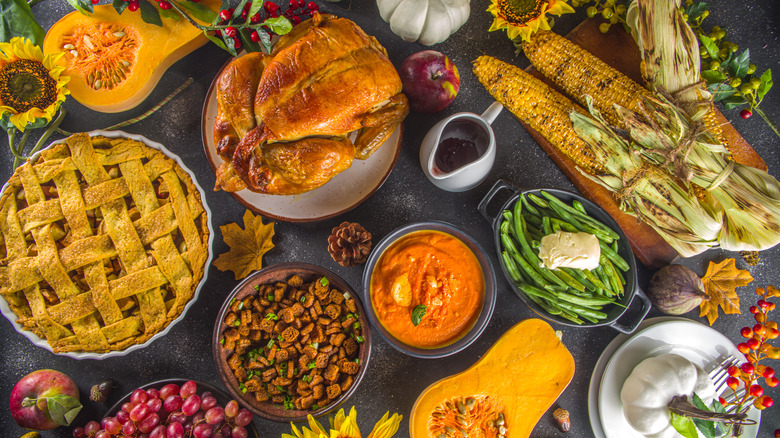The Real Reason Thanksgiving Is Always On The 4th Thursday Of November
Mashed potatoes and pumpkin pie aside, many of us know Thanksgiving as a day spent with lots of family and friends. This is a tradition dating back to the age of the Pilgrims, who, contrary to popular belief, did not extend a friendly invitation to the Indigenous at the time, a factoid that is often warped in American history textbooks (via The New Yorker). (The members of the Wampanoag tribe who arrived heard the celebratory gunfire and showed up to offer assistance.) Furthermore, there is less of a religious basis to this holiday than you might think, as they also celebrated the first "Thanksgiving" as a party, not as a prayer to God.
Though Thanksgiving celebrations have expanded and diversified since this first Thanksgiving in 1621, there is one thing that has been consistent: it always takes place on the fourth Thursday of November.
Thanksgiving has always signified the start of the holiday season, with other major holidays such as Hanukkah, Kwanzaa, Christmas, and New Year's Day to follow shortly after. But has it always been this way? The real answer for why this is might surprise you. And spoiler alert: It wasn't the Pilgrims who decided on this annual date.
Thanksgiving's date was established to boost Christmas sales
Thanksgiving was always celebrated in the month of November, and that's something that the Pilgrims did establish (via History). Thanksgiving then became an annual tradition, but George Washington gave it its first national holiday date in 1789. This banquet, held on November 26, was a celebration to commemorate the Patriot victory at Saratoga.
However, this date was changed in 1863 by Abraham Lincoln, who moved the holiday to the last Thursday of November. Years later, President Ulysses S. Grant changed the holiday to the third Thursday of November, according to The Daily Meal. It wasn't until decades after that President Franklin D. Roosevelt decided to sign legislation to permanently change Thanksgiving to the fourth Thursday of November in 1941.
This was the result of pressure from the National Dry Goods Association for him to extend the Christmas shopping season two years prior, in 1939. This action caused the holiday to be celebrated on the third of November in Washington D.C., but allowed state governors to decide for themselves when the holiday would be acknowledged. Finally, to eliminate confusion, Roosevelt made sure Thanksgiving would be observed nationally on the last Thursday of the month, where it remains to this day.

